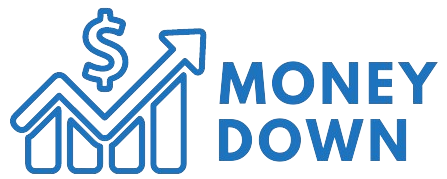The value of stocks can increase in ways in which investments in bonds, real estate, and other asset classes cannot: Companies will pay out between 0% and 100% of their profits to investors as dividends or dividends Share buybackswhile the remaining 100% to 0% may be reinvested in the corporate.
S&P 500 firms are inclined to retain about half of their profits We distribute the opposite half through dividends and buybacks. This feature of reinvesting earnings is barely available in stock investments.
In comparison, bond owners receive interest payments, but no portion of those interest payments is routinely reinvested back into the identical bond or other bonds. Landlords receive rental income, but this shouldn’t be routinely reinvested within the property.
Commodities and cryptocurrencies and other asset classes don’t pay money flows to their owners because they haven’t any money flows to start with. Owners can only redirect their investments into other assets by selling all or a part of their shares. Thus, “investing” in these asset classes is just a risk that prices will rise as a consequence of changes in supply and demand.1
Reinvestment of earnings is a particular feature of stocks, but this quality alone shouldn’t be what attracts investors. The appeal lies in the higher compounding of stocks in comparison with other asset classes.
The median quarterly ROE of U.S. non-financial firms has averaged 10.7% over 75 years

U.S. non-financial firms have a return on equity (ROE) of around 11%. in response to the St. Louis Fed. S&P 500 firms generate a mean ROE of about 13%, in response to S&P data. (This is not any surprise: the more profitable an organization is, the more likely it’s to grow to be large enough to be included within the S&P 500.) That is, if the typical S&P 500 company makes half of its profits at a return of 13% reinvested, then its profits are expected to grow by 6.5%. The S&P 500’s current dividend-plus-buyback yield is 3.5%, in response to S&P data.
Combining earnings growth with the dividend plus repurchase yield yields an expected return of 10% versus the S&P 500. This is before making an allowance for any changes within the index’s earnings multiple or any taxes on dividends or capital gains.
The result’s even higher if we own several outperforming firms that generate above-average returns on capital, slightly than your entire index. If we can purchase them at a sexy return on the money profits they generate, and in the event that they can reinvest much of their retained earnings at high returns over an extended time frame, we could well exceed that 10% pre-tax multiple compression (or expansion). -)Return number.
In fact, we would love our outperforming firms to pay us no taxable dividends in any respect after they could as a substitute reinvest the cash at high returns to drive business growth and create shareholder value.
And let’s not forget: Dividends are subject to double taxation (once at the corporate level and again at the person level), while retained earnings are only taxed at the corporate level.
Depending on the index and time period, long-term US stock returns have ranged from 7% to 10%. So the alternative between reinvesting profits at 13% or distributing those profits to shareholders to reinvest in stocks yielding 7% to 10% needs to be obvious. Internal reinvestment is a better option.
Of course, not all firms have such good prospects for reinvestment. Therefore, the choice to retain and reinvest profits or distribute them to shareholders relies on 4 aspects specifically:
- The price at which the corporate trades relative to its future money earnings potential.
- The attractive reinvestment opportunities available to the corporate.
- The expected returns on capital that may be achieved from these reinvestment opportunities.
- The prevailing corporate tax rates and tax rates on dividends in comparison with capital gains.
When the dynamics between these inputs work well, firms should maximize equity advantage and reinvest their profits slightly than paying them out as dividends or buybacks.
If you enjoyed this post, remember to subscribe.
1. Investors in such asset classes are pure speculators Keynesian beauty pageant. Gold may be made into jewelry and other products and sold. So gold has value. However, for the investment to be “successful,” cryptocurrencies have to be sold at a better price than was paid for them. Whatever value one investor gets out of it, one other has to pay. The money modified hands, minus transaction costs, but nothing productive was delivered.
Photo credit: ©Getty Images/Nikada



